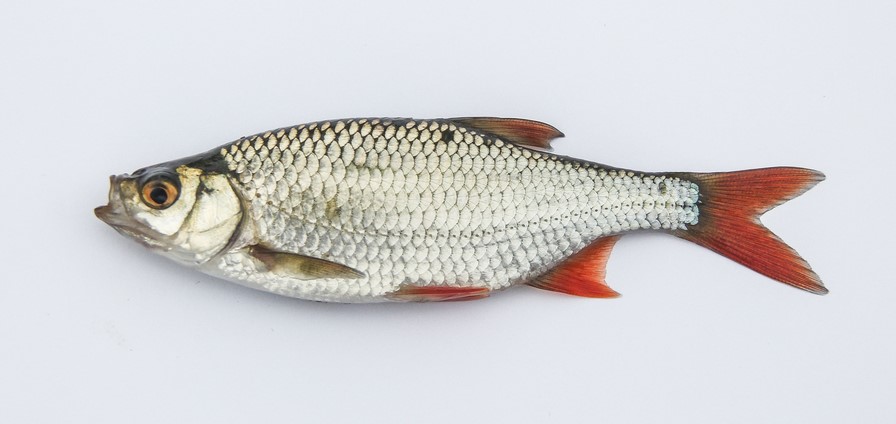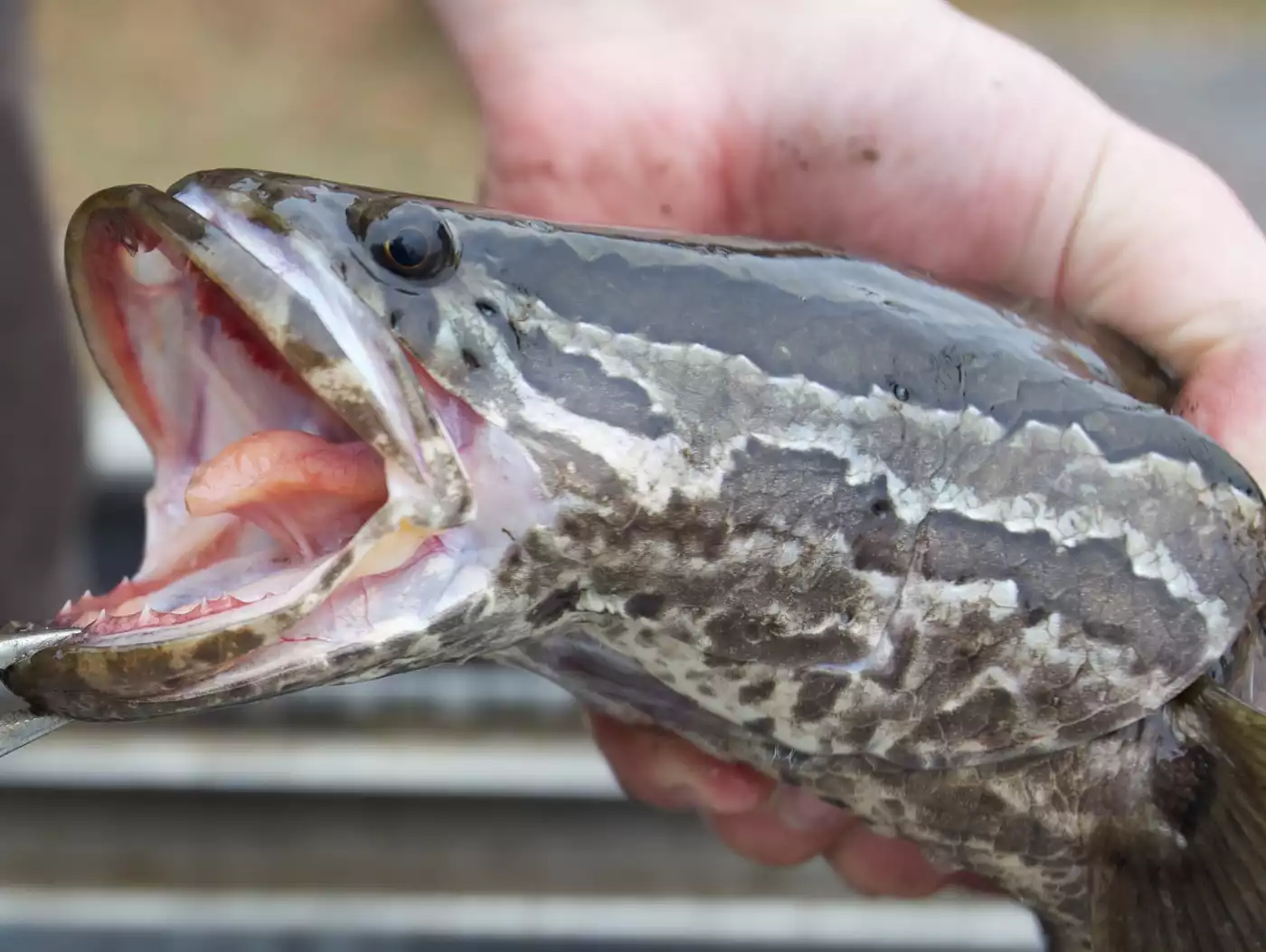At the most basic level, aquatic invasive species are water-dwelling organisms that are not native to Minnesota. The impacts of aquatic invasive species vary. While some invasive species cause damage to ecosystems, others can cause human or economic harm.
Priority Species List
Every year at MAISRC, we review the aquatic invasive species that should be prioritized for research. We identify the invasive species that are currently in Minnesota, or are in areas immediately adjacent to Minnesota, and are likely to cause significant damage. A species may be considered as high-priority if there are key uncertainties that prevent researchers/managers from developing effective prevention or management/control programs.
Every other year, MAISRC systematically identifies research needs related to these high-priority aquatic invasive species in order to direct research efforts and investments to the state’s greatest needs. Learn more about our Research Needs Assessment process. View the Priority Species list as a PDF.
2024 Priority Species List:
Invasive fish
| Species | Impacts | Click photo to learn more |
|---|---|---|
Cyprinus carpio | Common carp root in lake beds for food and in the process they uproot aquatic vegetation, increasing water turbidity and releasing large quantities of sediment-bound nutrients, which stimulate algal blooms. It is estimated that over 70% of lakes in southern Minnesota have lost their plant cover and suffer from excessive algal blooms due to carp’s foraging activity. |  |
Hypophthalmichthys nobilis | Silver and bighead carp are filter-feeders, straining microscopic plants and animals out of the water and away from paddlefish, gizzard shad, and young gamefish which rely on them. This disruption affects native fish and waterfowl and could result in diminished recreational and commercial fishing opportunities in the region. |  |
Hypophthalmichthys molitrix | Silver and bighead carp are filter-feeders, straining microscopic plants and animals out of the water and away from paddlefish, gizzard shad, and young gamefish which rely on them. This disruption affects native fish and waterfowl and could result in diminished recreational and commercial fishing opportunities in the region. Silver carp also pose a threat to human health due to their propensity to leap out of the water when disturbed by watercraft. |  |
Mylopharyngodon piceus | There is high potential that the black carp would negatively impact native aquatic communities by feeding on, and reducing, populations of native mussels and snails, many of which are considered endangered or threatened. |  |
Ctenopharyngodon idella | Grass carp are voracious feeders that pose a threat to terrestrial plants, such as shrubs at the water line. Grass carp can also eradicate aquatic vegetation that serves as a food supply for waterfowl and as refuge from predators for young fishes. |  |
Gymnocephalus cernua | Ruffe grow rapidly, have high reproductive output, and adapt to a wide range of habitat types--because of these traits they pose a threat to native fishes. |  |
Neogobius melanostomus | Round goby impact the population of native fishes by preying on their eggs in large quantities. |  |
Carassius auratus/gibelio | Where released, goldfish can be responsible for the decline of native fish, invertebrate and plant populations in different areas. Furthermore, it is notorious for increasing water turbidity because of its habit of stirring up bottom sediments during feeding. |  |
Sander lucioperca | Concern exists that zander and walleye could hybridize. |  |
Scardinius erythrophthalmus | The Rudd is a somewhat stocky, deep-bodied fish with a forked tail, and the mouth is distinct with a steeply angled protruding lower lip. The Common Rudd has omnivorous feeding habits that can change with temperature and season. Generally, their diet includes macrophytes, bryophytes, and filamentous algae along with fish and some other animal material and detritus. |  |
Channa argus | High potential for outcompeting native species for food resources and altering food-web dynamics due to its voracious predatory nature, wide environmental tolerance, and varied diet |  |
Species evaluated but not selected: Alewife (Alosa pseudoharengus), Fourspine stickleback (Apeltes quadracus), Three-spined stickleback (Gasterosteus aculeatus), White perch (Morone americana), Sea lamprey (Petromyzon marinus), Tubenose goby (Proterorhinus marmoratus), Yellow Bass (Morone mississippiensis), Tench (Tinca tinca), Swamp eel (Monopterus albus/Amphipnous cuchia), Rainbow smelt (Osmerus mordax).
Harmful microbes
| Common name | Impacts | Click photo to learn more |
|---|---|---|
Viral hemorrahagic septicemia virus | As the name describes, the virus can cause internal and external bleeding which in severe cases leads to organ failure and death. |  |
Asian Fish Tapeworm (AFT) Schyzocotyle acheilognathi | Asian fish tapeworms parasitizes freshwater fish. The adult worm is an intestinal parasite in fish. Asian Fish Tapeworms can be spread by commercial carp and baitfish operations, such as grass carp pools, or Fathead Minnows or Golden Shiners. Fish infected with Asian Fish Tapeworms have been shown to have reduced ability to cope with stressors such as food availability. | |
| Tetracapsuloides bryosalmonae | Tetracapsuloides bryosalmonae is a myxozoan parasite of salmonid fish. It is the only species currently recognized in the monotypic genus Tetracapsuloides. It is the cause of proliferative kidney disease (PKD), one of the most serious parasitic diseases of salmonid populations in Europe and North America that can result in losses of up to 90% in infected populations. | |
| Largemouth Bass Virus (LMBV) | Largemouth bass virus (LMBV) is primarily a virus of largemouth bass, but more recently has been confirmed to also cause significant disease in smallmouth bass. | |
| Chytrid fungus | Chytrid fungus is known to feed on living vertebrates. It primarily affects the skin of amphibians, causing the disease known as amphibian chytridiomycosis. |  |
Myxobolus cerebralis | In infected salmonids, the disease caused by M. cerebralis can result in whirling behavior or tail-chasing; damage to the central nervous system and organs of equilibrium; lesions in the skull, gills, and vertebrae; and sometimes mortality (Mills et al. 1993; Crawford 2001; Gilbert and Granath 2003; Krueger et al. 2006). |  |
Bacterial kidney disease (BKD) Renibacterium salmoninarum | Symptoms of BKD can include: abdominal fluid build-up and swelling; pseudomembranes on viscera; kidney and gill necrosis; hemorrhaging on viscera and in intestines; ulcers or abscesses in muscles; protruding eyeballs; anemia; blood blisters; and lesions of the eyes, liver, spleen, and heart (Austin and Austin 1987; Holey et al. 1998). |  |
Species evaluated but not selected: Aeromonas salmonicida, Bass tapeworm, Clostridium botulinum, Cylindrospermopsis raciborskii, Dermal sarcoma, Lymphocytis, Lymphosarcoma, Myofibrogranuloma, Neascus, Tilapia Lake Virus, Piscirickettsia salmonis, carp edema virus (CEV), Spring viremia of carp virus (SVCV), Cyprinid Herpes Virus-3 (CyHV-3), Rickettsia-like organisms (RLOs), Ovipleistophora ovariae (Ovi-O), Heterosporis, Novel Aipenserid herpesvirus, Didymosphenia geminate, Edwardiella piscicida, Toxoplasma gondii, Cyathocotyle bushiensis, Sphaeridiotrema ssp.
Aquatic invasive invertebrates
Species evaluated but not selected: Fishhook waterflea (Cercopagis pengoi), Chinese mystery snail (Cipangopaludina chinensis malleata), Chinese mitten crab (Eriocheir spp.), Common water fleas (Daphnia lumholtzi), Banded mystery snail (Viviparus georgianus), Caspian mud shrimp (Chelicorophium curvispinum), Killer shrimp (Dikerogammarus villosus), Signal crayfish (Pacifastacus leniusculus)
Aquatic invasive plants
| Common name | Impacts | Click photo to learn more |
|---|---|---|
Potamogeton crispus | Curlyleaf pondweed inhibits the growth of native species, interferes with recreational activities, and disrupts valuable services provided by native plants such as stabilizing sediment, improving water quality, and providing support for fish and other animals. |  |
Eurasian and hybrid watermilfoil Myriophyllum spicatum, M.spicatum x sibiricum | Eurasian and hybrid watermilfoil grow rapidly and tends to form a dense canopy on the water surface, which often interferes with recreation, inhibits water flow, and impedes navigation. Eurasian watermilfoil is a particularly problematic aquatic weed, due to its ability to reproduce from fragments and spread rapidly, its high growth rate in a range of temperatures and environmental conditions. Some genotypes of specifically hybrid watermilfoil are more tolerant of some herbicides and, thus, more difficult to control. |  |
Typha x glauca, T. angustifolia | Narrow leaf cattails can develop large monocultures, outcompete native vegetation and will crossbreed with native, broad-leaf cattails. |  |
Lythrum salicaria | Purple loosestrife creates dense growth along shoreland areas and makes it difficult to access open water. IT overtakes habitat and outcompetes native aquatic plants, potentially lowering diversity. It also provides unsuitable shelter, food, and nesting habitat for native animals and its dense root systems changes the hydrology of wetlands. |  |
Phragmites australis | European common reed is a tall, aggressive grass that can take over wetlands and shorelines, push out native vegetation, and reduce habitat quality for wildlife. The aggressive invader can also impact infrastructure such as roads, stormwater ponds, and agricultural ditches. |  |
Pale yellow iris Iris pseudacorus | ||
Nitellopsis obtusa | Starry stonewort grows in tall and dense colonies. It is known to form mats on the surface of the water that can interfere with recreation and potentially displace native plant species. |  |
Hydrilla verticillata | Hydrilla crowds out native species, impedes irrigation, and interferes with boating and recreation. |  |
Butomus umbellatus | Flowering rush creates dense growth along shoreland areas makes it difficult to access open water. It overtakes habitat and outcompetes native aquatic plants, potentially lowering diversity. It also provides unsuitable shelter, food, and nesting habitat for native animals. |  |
Nymphoides peltata | Yellow-floating heart develops monotypic dense patches that can exclude native plants and create stagnant, low-oxygen conditions in the water below. These areas of stagnant waters can be an ideal location for mosquitos to breed. If the population of yellow-floating heart is large enough, fish and other wildlife may be forced to relocate. The mat-like patches also impede recreational activities such as fishing, water skiing, swimming, and boating. |  |
Cabomba caroliniana | Cabomba is an extremely persistent and competitive plant that grows quickly and crowds out other vegetation. Cabomba forms dense mats that block sunlight penetration to lower water depths and shades out germinating seeds or propagules. |  |
Hydrocharis morsus-ranae | Free-floating growths of European frog-bit can lead to densely tangled mats, which can crowd and shade out native aquatic vegetation. It can dominate wetlands where it occurs, and the dense mats may effect wildlife as well as native plants. |  |
Species evaluated but not selected: Water hyacinth (Eicchornia crassipes), Brazilian waterweed (Egeria densa), Dwarf hygrophila (Hygrophila polysperma), African elodea (Lagarosiphon major),Water clover (Marsilea), Watercress (Nasturtium officinale), non-native water lilies, Reed canary grass (Phalaris arundinacea), Giant salvinia (Salvinia), Water soldier (Stratiotes aloides), Water chestnut (Trapa natans), Parrot feather (Myriophyllum aquaticum), Brittle naiad (Najas minor)








